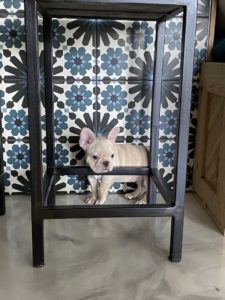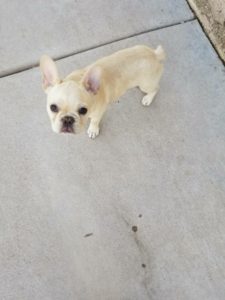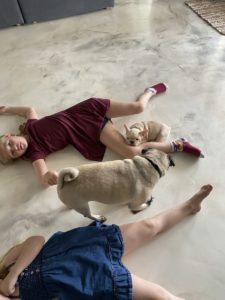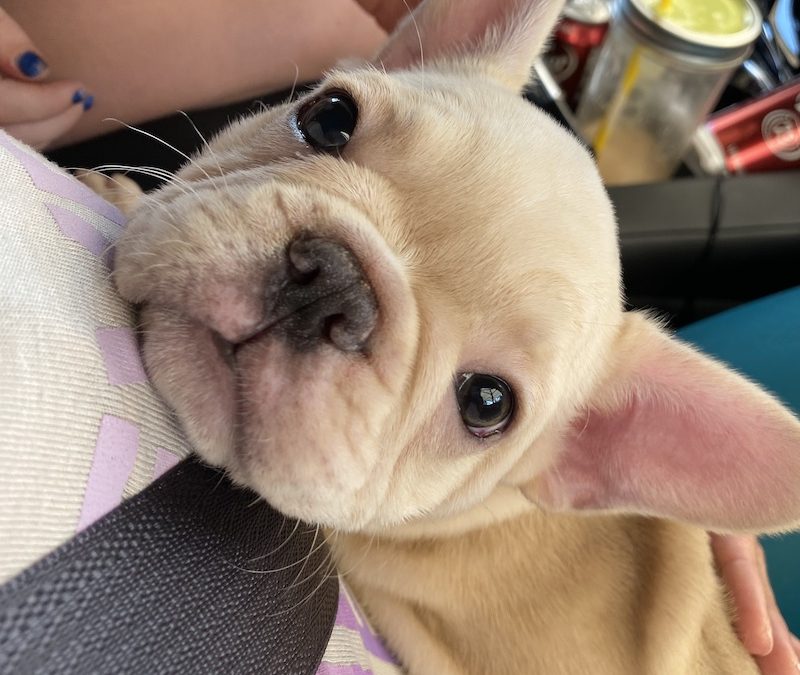The bed, bowls, collars, and leashes have been purchased. That’s the fun part. Are you really ready to welcome a pup into your home? The dog breeder has left a message: “Your pup is ready!”
New Puppy Checklist
The Journey
All those weeks (and maybe months or years) of waiting for the perfect pup to land on the floor are now over. As the saying goes, “The joy is in the journey.” Perhaps the journey leading up to this moment has been filled with dreams about the things you and pup will do together. Chasing through the snow, taking long walks, sitting together by the fire, romping on the beach… all those wonderful reasons why people want a dog to share their lives.
Credit Card Melt-Down
New puppy owners’ dreams are often interspersed with crazed shopping sprees at pet supply stores. Buying the bed, bowls, collars, and leashes have rendered many credit cards smoking in the wake.
That’s the fun part, and every new owner is entitled to run amok in the thrill of the impending arrival.
The dog bed is in place (it has been for weeks), the tiny and perfect adjustable collar and leash are de-tagged and hanging in the closet. After much research, the correct food has been purchased and sits on the kitchen counter. It’s right there, next to those adorable food and water bowls. But what about the rest of the house?
Puppy-Proof the Home

Inspect your home from the viewpoint of a two-year-old human toddler. Decide which rooms will be accessible to the pup. Designate where you will give puppy loves and where you won’t i.e. furniture or not. And then consider how to close off all others. Baby gates can be used to prevent entry into off-limit rooms as well as the top of staircases.
In areas where the pup will be allowed to enter, remove all breakable objects, houseplants, and anything that spells “puppy trouble”. Cover electrical outlets and secure cupboard and closet doors. Outlet covers and an array of child-proof door devices can be purchased at hardware stores and other retailers. Decide how and where you will do house training and if dog crates will be included in that training. Another important area is to have your puppy supplies in a specific spot including chew toys, dog food, puppy food, and puppy shampoo for accidents.
Book a Veterinary Appointment
Book the pup’s first vet visit to coincide with his trip home from the breeder. This is the best time for the pup to meet the vet and clinic staff, and will most likely be his first foray with you into that all-important socializing process. The vet will give the pup a quick health check, set up a vaccination schedule, and discuss diet, parasite control, pet insurance, microchipping, neutering, and all those other puppy issues.
Be sure to show the veterinarian any paperwork supplied by the breeder. So he or she can take note of previous veterinary visits and any vaccinations pup may have already received.
Find a Knowledgeable and Experienced Dog Trainer
Locate a fabulous trainer before the pup comes home. Many people don’t research the availability of local trainers until behavioral problems arise. Nipping, barking, housetraining, crating… all those puppy-things can be addressed on a one-to-one basis. Afterward, that same trainer can recommend the most suitable puppy training class for you and the pup to join.
If you are close or local to Arizona, we love Partners Dog Training & Daycare. Louie, our new French Bulldog, will be our second dog we take for training there.

Find a Groomer or Plan to Groom at Home
Locate a professional groomer or self-serve grooming facility. If the pup will require regular professional grooming, introduce him to the idea as soon as possible. He’ll be given his first bath, light brushing, and trim, and then the groomer will provide tips on how to keep his skin and coat healthy between visits.
If you plan to bathe him at home or use a self-serve facility, introduce the pup to the tub and brush within the first few days. Many dogs, if not initiated into the bath ‘n’ brush routine at an early age, can be downright ornery or fidgety about it as they grow older. Some canine body parts, such as feet, toes, tail, and tummies, can be particularly off-limits for some dogs. But if those areas are touched and groomed early in the game, the procedure can be much nicer for everyone, especially the dog. For example, we have an adult dog, who’s a 6 year old Pug, who will not let the nail clippers come near him. He runs to his crate as soon as you bring them out!
Enlist the Services of Substitute Caregivers
Identify people who can take over when you’re not available. Professional dog walkers, responsible friends and neighbors. And perhaps a doggie daycare center will be needed at some point in your dog’s life. During pup’s first few months, if you can’t return home mid-day, a substitute caregiver will be required to let the pup out to relieve himself as well as provide him with exercise and companionship. Make sure you have these phone numbers handy if you are running late and need to place a call especially if the pup isn’t yet crate trained and needs to be in a dog crate to avoid damage inside.
Bonus: holidays, social occasions, or whenever you can’t get home on time will always require the services of someone who knows you, your dog, and your home. Enlisting these people early means you’ll never have to worry about those times when your schedule prevents you from providing your dog with his daily needs.
Last, but not least…

The most important entry on your check-list: plan to provide a lifetime of love, compassion, and patience. You’ll always be the most important person in the world to your dog. Being a pet parent is unlike any other. Give him a reason to trust that he’s in good hands. He’ll repay you ten-fold.
There are many more items to be included in a check-list for new puppy owners. But don’t despair! The list can be expedited by asking for suggestions from a veterinarian, dog trainer, groomer, dog walker, and any dog-owning friends and neighbors.
Enjoy that new pup!


Recent Comments